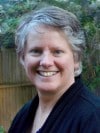Assessment at the Center
CompetencyWorks Blog
Student-centered instruction must be built around the feedback and assessments that are given to students while they are learning. Unfortunately, almost all of us have been raised in learning models that focus exclusively on what students do while they are in the classroom and fail to incorporate effective feedback and measurement. We’ve experienced this model as students, and in our teacher training.

The vast majority of teachers spent years being taught how to write lessons. Single content lessons were at the heart of what we were expected to produce for most of our education courses. Assessments and tests that were to be delivered at the end of a unit of study were usually included in our lesson plans, but learning to write lessons was the core of our training. The result is that we are comfortable with lessons. We even feel a sense of ownership and personal identity about the lessons that we write. Our misplaced attention means that we don’t learn how to develop routine, formative assessments that provide students with feedback, and that provide us with the information we need to provide targeted instruction. Instead, we stick with what’s comfortable, and our colleagues, who have been trained just like us, reinforce the focus on lesson plans.
The spotlight on lessons is evident in the fact that teachers are afforded daily planning time, instead of a daily evaluation time. Put two teachers together to plan and they immediately begin to talk about what they can ask students to do. This creation of activities is essentially how we have always defined teaching. Creating successful educational opportunities for students is important, but it is essential that students and teachers know whether students have learned while they were engaged in those opportunities. Even when we do talk about measuring learning, the conversation invariably begins with a question about the activities. We must flip this thinking.
Education competencies should have assessments, formative and summative, at their core. This means that, as a middle school art teacher, I have to begin with what I want students to know. For example, I need to know that my students can effectively use and evaluate a range of subject matter, symbols, and ideas. I begin by thinking about how I will measure these aptitudes. Obviously, they will need to make some kind of artwork. This is the point where a teacher typically begins to plan what students are going to make. Stop! First articulate what is going to be measured. I begin by making a scoring rubric that specifies various components of the competency. I consider the forms in which they best measured. Then I think about the path that students must travel in order to demonstrate proficiency. It is those steps that I know will provide the best venues for direct instruction and formative assessment. A student who is learning to use subject matter, symbols, and ideas in art doesn’t necessarily have to do that in a specific media. It might help me manage materials if all of my students use the same medium, but there is no need for me to require it. In fact, I find that allowing students to make these non-essential choices feeds their investment in the outcomes, and it helps maintain everyone’s shared focus on the measured competencies. Even when students are evaluating the use of subject matter, symbols, and ideas, I try not to require that everyone write an essay. Audio recordings, videos, and blogs are also suitable formats for demonstrating the ability to evaluate artwork, and they are often more engaging to students. The competencies, what students know and can do, are the polestars. I want students to attend to those aspects of their learning. The activities that they undertake to get there may vary, and are simply a means for providing students with incremental, meaningful feedback.
Assessment, as an instruction strategy, is an ongoing process that supports students’ reflection and self-evaluation, not a summative test that is given only at the end of the work. The success of this approach is evident in Finland’s schools, where assessment is embedded in the curriculum as a part of their inquiry-based model. Linda Darling-Hammond writes about this integrated approach in Steady Work: How Finland Is Building a Strong Teaching and Learning System (2009), saying, “Consequently, ongoing feedback from the teacher is very important. Teachers give students formative and summative reports both through verbal and narrative feedback.” We know that offering students habitual reflective input is the best method of ensuring growth and understanding, but we are easily trapped in traditional conventions.
The time to make changes in the classroom is now, and the excuse that there is no time for student-centered practice is just an evasion. Time is, of course, a precious commodity in schools, but the classroom clock does not prevent anyone from making the decision to change their practice so that teachers and students are continually engaged in the evaluation of learning. All you need is a new mental framework. Ask yourself, what am I measuring, and is that what students are learning? Of course, practice is necessary too. It’s not easy to break a lifelong habit, so give yourself a chance to improve. Like your students, you shouldn’t know how to do something the first time you try.
See the Competency-Pathways wiki for an example of a rubric that Barbara Weed uses in her art courses.
Darling-Hammond, L. (2009). Steady Work: How Finland Is Building a Strong Teaching and Learning System. Voices in Urban Education. 24, pg. 21. Annenberg Institute for School Reform at Brown University.
Barbara Weed holds a B.F.A and a M.S. Ed. She is a National Board Certified Teacher. Ms. Weed taught middle school art for seven years, and is currently an instructional coach. She has been engaged in school transformation, as a parent and as a teacher, for many years.
